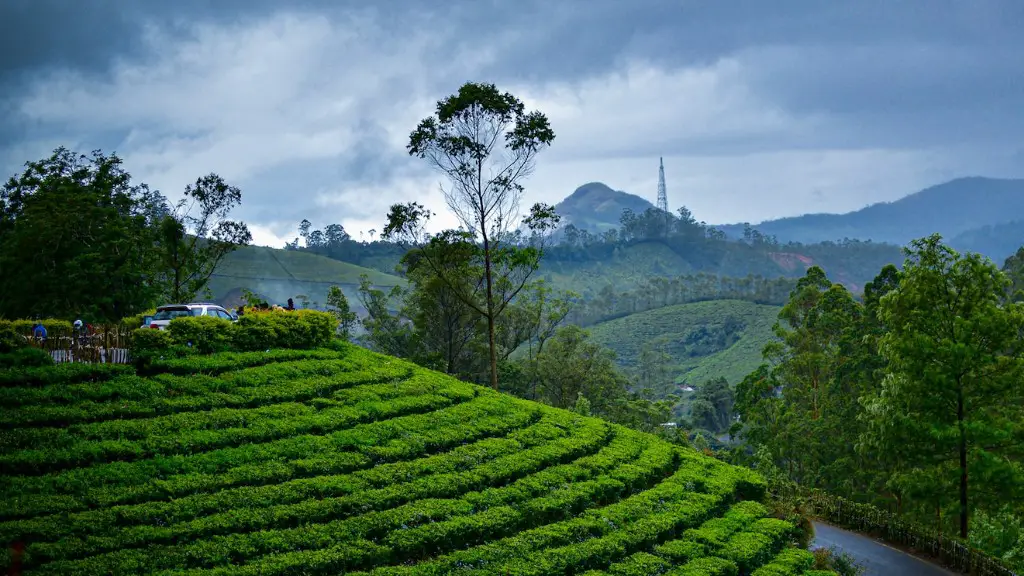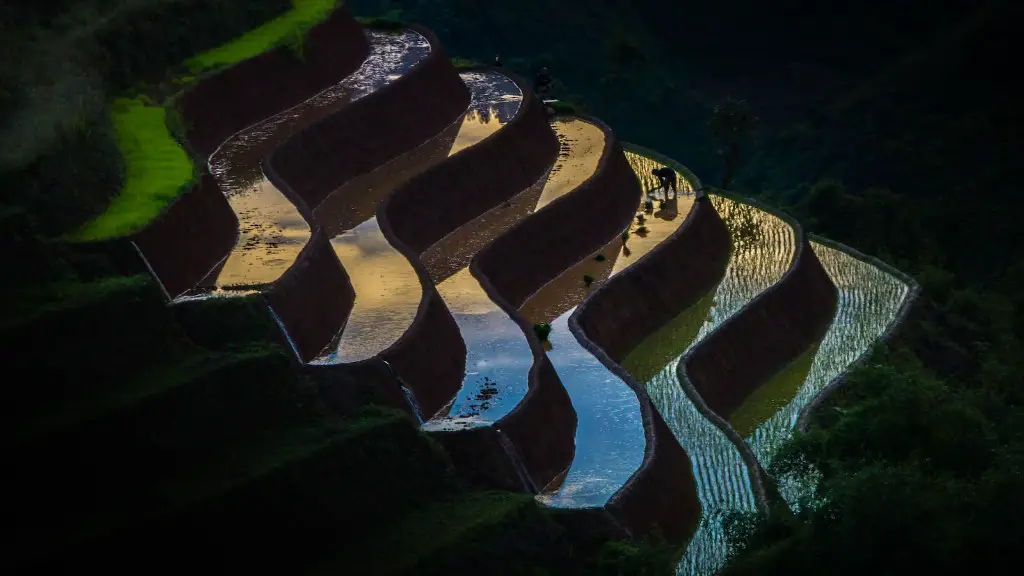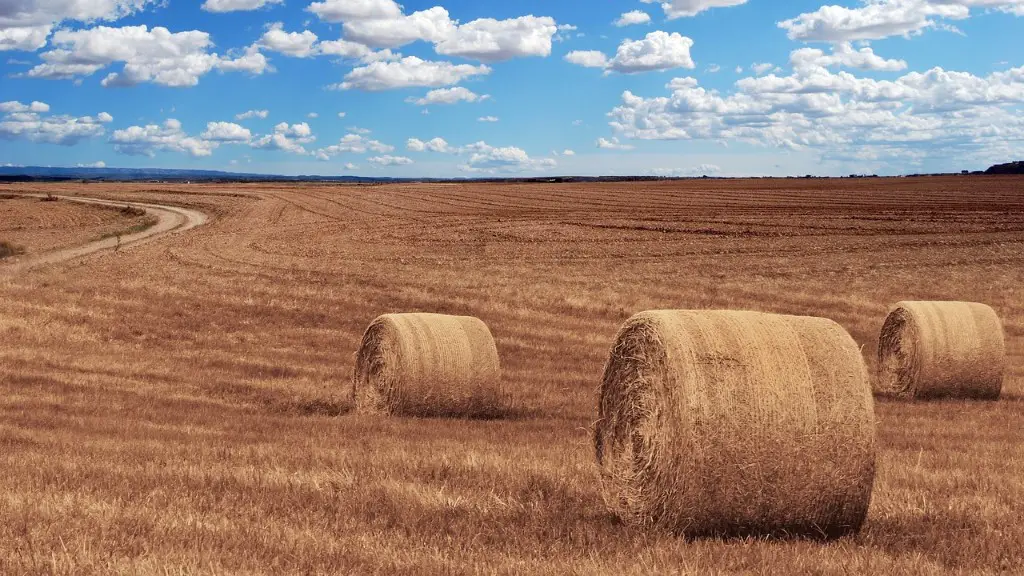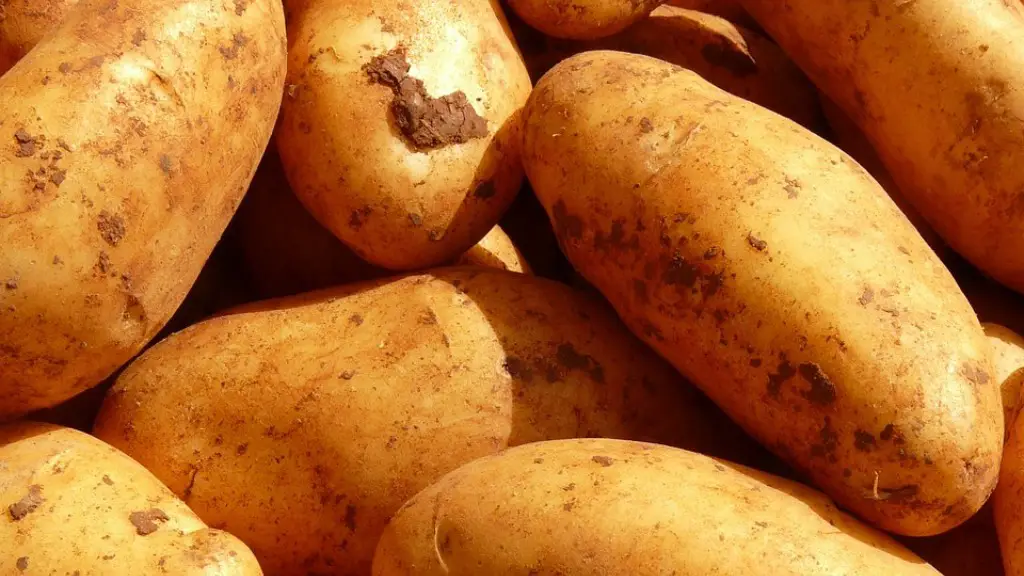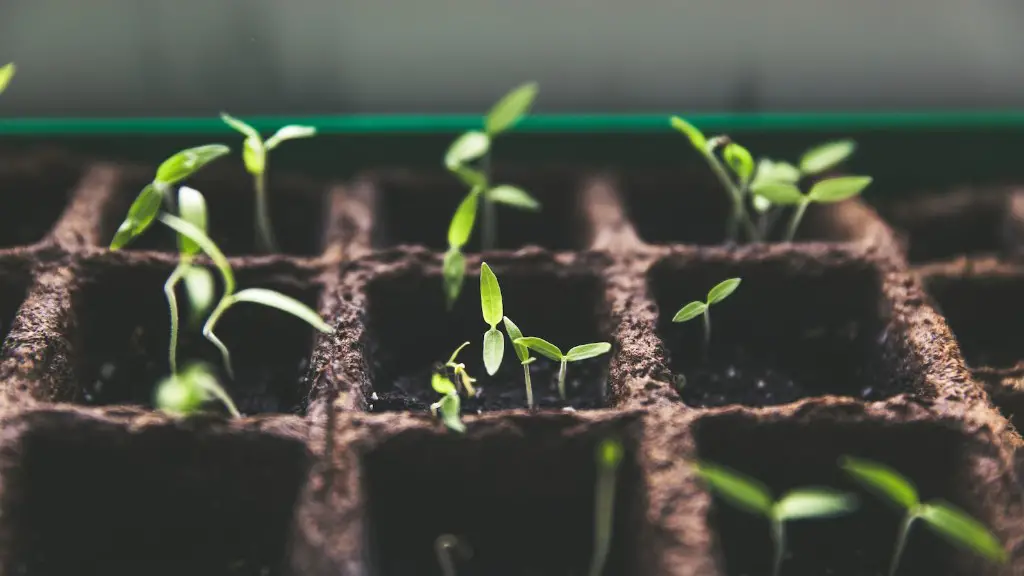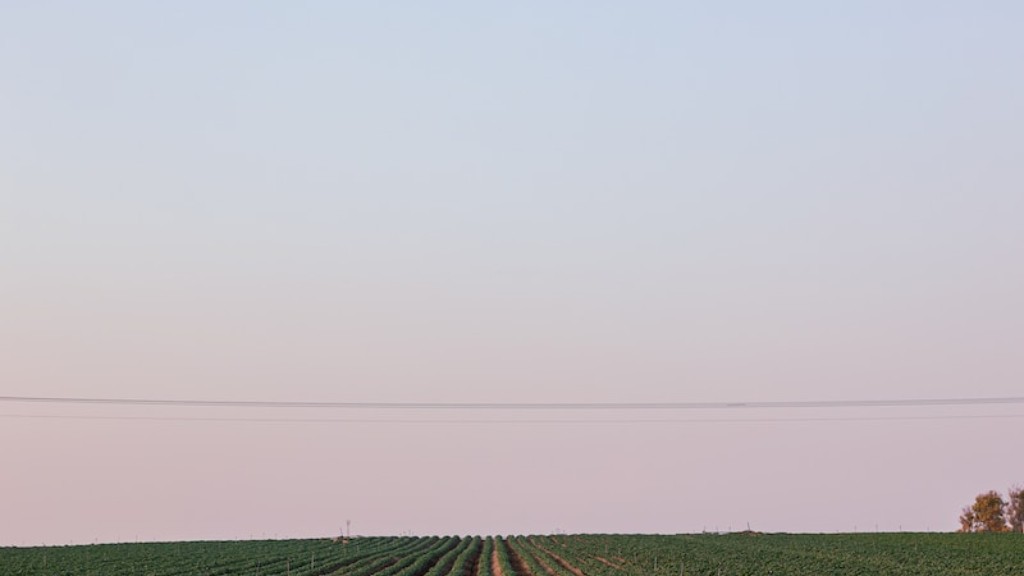Climate is one of the most important factors in the success or failure of a farming operation. It is essential that farmers understand how climate affects their crops, animals, and other agricultural production systems. This article will explore how climate can influence agriculture, from selection of crops, to utilization of irrigation and fertilizers.
The most basic factor of climate is temperature – it is important to select the right crops depending on temperature range, length of growing season, and the amount of available water. For example, temperate climates are suitable for livestock, while tropical climates are better for seasonal crops. Additionally, the amount of rainfall and the rate of evaporation can affect soil moisture, water availability for agriculture, water use efficiency and ultimately yield of crops.
Strong winds can cause soil erosion, reducing the nutrient content in the soil and limiting crop production. High temperatures can lead to desiccation or overheating of crops, while low temperatures can lead to reduced photosynthesis and nutrient uptake. Hilly areas and terraces can protect crops from wind and frost damage, while fire-sensitive ecosystems benefit from lower temperatures in terms of disease prevention.
In addition to temperature and precipitation, other factors such as cloud cover, air humidity, air pressure and air quality can have an impact on the growth of crops. Intense radiation of direct sunlight can have a negative effect on crops and can increase the risk of desiccation; however, radiation can also be beneficial in some cases by promoting the faster growth of plant species such as legumes.
Climatic factors, such as temperature, humidity, cloud cover, precipitation, air quality and wind speed, can all have a direct impact on the viability of a farming operation. Farmers must be aware of the effects of climate on their crops and adjust accordingly – for example, opting for drought-tolerant crops, investing in adapted irrigation systems, or utilizing more efficient fertilizers.
Growing the Right Crops
Growing the right crops is essential in ensuring the success of a farming operation. The type of crops to be grown should be selected on the basis of the climate conditions prevalent in the area. For example, temperate climates are suitable for cereal and livestock production, while tropical climates are better suited for seasonal crops and high-value cash crops such as fruits and vegetables. Choosing the right variety of crop is extremely important, as the crop must be able to survive the maximum and minimum temperatures of the growing season, as well as the amount of rain or moisture present, in order to yield a good harvest.
In areas where the climate is unpredictable or particularly severe, farmers should consider planting tolerant varieties of crops, either as a primary crop or as a fallback crop. A backup crop should have similar climate requirements as the primary crop, but it should have a greater ability to withstand extreme conditions, such as drought or flooding.
Today, farmers have access to a variety of advanced climate forecasting tools, such as the Climate Forecast System, the Global Forecast System, and various satellite data platforms, in order to make informed decisions regarding the type and variety of crops to be planted in the current season.
Technology in Agriculture
Technology has had an immense impact on the way farming operations are conducted today. Today, farmers have access to a multitude of technological tools that can help them not only survive, but thrive in challenging climatic conditions. For example, precision agriculture, or precision farming, makes use of data collected from various sensors and cameras to monitor field conditions such as soil composition, moisture, and temperature. This information is then fed into planning software, where it can be used to create optimized plans for planting, fertilization and irrigation.
In addition to precision agriculture, there is also the use of drones, or unmanned aerial vehicles. Drones are equipped with cameras that can collect detailed data about crop health, and can also be used for crop spraying and monitoring desertification. Farmers can also use applications such as crop monitoring systems, mobile weather stations or ‘smart irrigation’ systems, in order to optimize their farming operations.
By using these technologies, farmers are able to cope with changing climate conditions and adopt new approaches to agriculture, thus ensuring that their farms remain productive and profitable.
Environmental Adaptations
Farmers must also make changes to the physical environment of their farms in order to optimize them for extreme weather events. For example, they can use crop cover to minimize wind damage, terraces and hillocks to protect crops from frost damage, and firebreaks to reduce the risk of wildfires.
In addition, farmers can also use water management techniques such as mulching and drip irrigation, in order to reduce water loss and optimize water usage. Furthermore, the use of organic fertilizers and fertilizer application techniques, such as broadcasting and splitting, can help to optimize soil fertility and crop yields.
Changing the physical environment of the farm is often necessary in order to adapt to extreme weather conditions or new technologies. By incorporating these environmental adaptations, farmers can ensure that their farms are able to produce successful harvests of crops in spite of climatic variations.
The Role of Farmers
Farmers play a pivotal role in adapting to climate change. They are the first to experience the effects of climate change on their farms and thus, they are in the frontline in the fight against climate change. As such, they must be equipped with necessary knowledge and technology in order to develop solutions that will help minimise the impact of climate change on their farms.
In order to do this, farmers must be aware of the changes in their local climate and must monitor the effects of these changes on the soil, water, plants, and animals on their farm. They must also stay informed of the latest technological innovations and be willing to invest in new tools and techniques that will help them better manage their farms.
Additionally, farmers must also be open to changing the physical environment of their farm and embrace environment-friendly methods of farming, such as organic farming or no-till farming. By doing this, farmers can not only maintain their farm’s productivity, but also contribute to the preservation of their environment.
Economic Adaptations
Climate change can have significant economic impacts on the farming sector. One way to mitigate these impacts is through economic adaptations. This can include providing farmers access to credit, insurance, or grants, in order to help them cope with the impact of climate change. Additionally, governments can implement innovative policies, such as tradable emissions quotas, in order to incentivize farmers to use environmental-friendly farming practices.
The use of modern technology can also help farmers adapt to changing climate conditions. For example, the use of blockchain technology can help to reduce the amount of paperwork involved in agricultural transactions and can provide better utilized data to help inform decisions. Additionally, the use of artificial intelligence can help farmers to forecast crop yields and generate tailored suggestions for planting, fertilisation, and irrigation.
Furthermore, by providing farmers with access to digital payments, such as mobile money, they can be more easily integrated into the global economic system. This, in turn, can provide more opportunities for farmers to access new markets and increase their profits, thus helping them to cope with the changing climate.
Conclusion
Climate has a significant impact on agriculture – from the crops grown, to the irrigation, fertilization and technologies employed. Farmers must be aware of the changes in their local climate and- be open to adapting their farming practices accordingly. Moreover, governments and other stakeholders must provide farmers with the necessary resources and technology to ensure that their farms remain productive and profitable in spite of changing climatic conditions.
